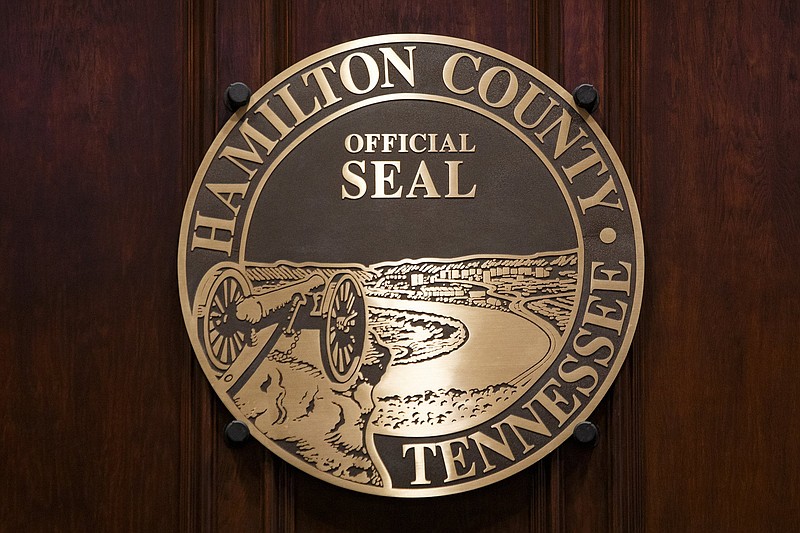Hamilton County celebrated its bicentennial just two years ago with public ceremonies recalling the Tennessee General Assembly's action on Oct. 25, 1819, that created the new county "so named to perpetuate the memory of Alexander Hamilton." At the time of its organization, Hamilton County was home to 821 residents: 706 whites, 39 enslaved people and 16 free people of color.
The names of early settlers appear in the oldest records and are reminders of the Scots-Irish traders who came into the region following the Revolutionary War. While many may recognize the names of early residents such as McNair, McPherson, McDonald, Lowrie and Adair, others may be less familiar with Charles Gamble, whose name appears in the land records from 1816. Gamble had served as a deputy sheriff in Rhea County before his move to Sale Creek three years before the creation of the county and, once the legislative action occurred, was elected the first sheriff of Hamilton County.
A search of land records also uncovers documents about the Poes and the Rawlings, other early settlers. The Poe residence, known in local history as Poe's Tavern, was located not far from Melville Station on the Cincinnati Southern Road and was the site of the first term of the Circuit Court. The courts were soon transferred to the house of Asahel Rawlings when "Old Dallas" was designated as the "new" county seat. The Dallas community, named for James Dallas, an early 19th-century American statesman, remained the center of government until 1840 when it moved briefly to Vann's Town and then almost immediately to Harrison, where it remained for 30 years. In 1858, a "Law Court of Chattanooga" was established for the convenience of the successful business community, with Judge John C. Gaut and his clerk, Elbert A. Glenn, presiding. One year later, Chancery Court was created with T. Nixon Van Dyke, originally of Athens, as chancellor.
In 1870, the rise of Chattanooga as a major industrial center in the "reconstructed" Upper South precipitated a vote that moved the county seat to the city that had been chartered more than 30 years earlier. In reality, the official shift of power from Harrison to Chattanooga would likely have occurred a decade earlier if not for the U.S. Civil War and the city's control by Union forces. As the vote demonstrated, power had shifted from the rural landowners to the new industrial class and the business elite.
Post-war Chattanooga also witnessed the advent of a public school system after an 1867 vote by the state legislature. Superintendent E.O. Tade received the initial four-year contract based on a salary of $700 per year. The second superintendent of Hamilton County Schools, W.O. Beene, oversaw the construction of four schoolhouses built in the 2nd, 4th, 11th and 15th Districts. During the next few years, H.F. Rogers, A. Shelton and H.B. Heywood each served terms as superintendent. By 1875, due to a downturn in county funds, the superintendent's salary was reduced to $300 a year, and it remained there until 1883 when it was raised to $600, still less than the salary 16 years earlier.
When the school system was first created, Hamilton County funded the academic programs based on a $1 per pupil allotment. Fifteen years later, the allotment increased to $2.50 per pupil. How were the schools able to function on that allocation of funds? In 1867, schools were only open for one month per year. By 1885, the county offered a five-month session for the 15,000 students enrolled in the 40 schools owned by the county. Most school buildings were valued at about $500, based on records and, of the 40 schools, only seven were still one-room schools. At the same time, the 503 teachers' salaries had increased to $33 a month, a competitive wage in the southeastern United States, and a teacher retirement fund had been created by the county.
The increase in population led to more than just community schools as post offices appeared in Wauhatchie (1866), Lookout Mountain (1867), Fairmount (1872), Red Bank (1875), Hill City and Daisy (1883) and Mission Ridge (1884).
Just as the population created shifts in local power, national political preferences shifted following Reconstruction, moving from its previous preference for Whig candidates. After all, Hamilton County had voted for Kentucky's Henry Clay, Whig, against Tennessee Democrat James K. Polk in 1844.
But that's a story for another day
Linda Moss Mines, the Chattanooga and Hamilton County historian, is regent, Chief John Ross Chapter, NSDAR, and chairman of Erlanger Health System's board of trustees.
